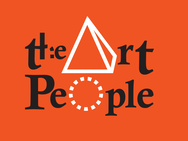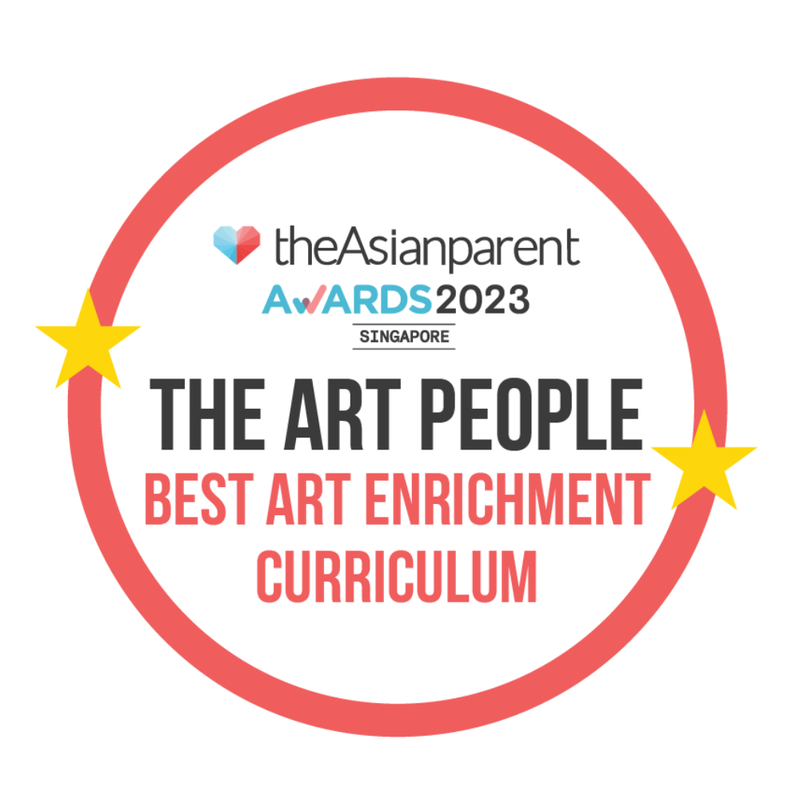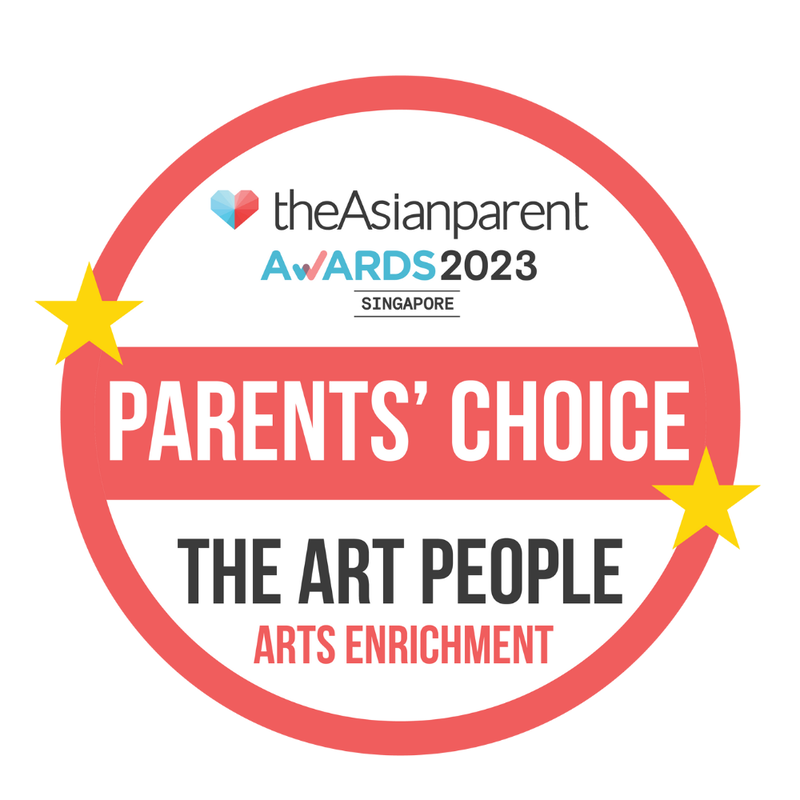Mastering the DSA Art Portfolio: Your Key to Secondary School Success
Are you a budding artist seeking the key to unlocking success in secondary school? Look no further! Mastering the DSA Art Portfolio is your golden ticket to an exciting and fulfilling journey in the world of visual arts. Imagine yourself standing out among your peers with an impressive portfolio that showcases your unique talents and passion for art. This blog post will guide you through the thrilling process of creating a competitive DSA art portfolio, acing auditions and interviews, and navigating the application process with ease. So, let’s embark on this artistic adventure together!
Key Takeaways
- Showcase your creative abilities through an art portfolio for DSA admission to secure a spot in top secondary schools and JCs!
- An impressive art portfolio can significantly increase chances of success, showcasing dedication, passion & unique perspective.
- Invest in art programs & workshops to transform your DSA art portfolio and maximize chances of acceptance into renowned institutions!
Understanding DSA and Art Portfolios
Direct School Admission (DSA) offers an incredible pathway for students to secure a spot in prestigious secondary schools or Junior Colleges (JC) by showcasing their extraordinary abilities in co-curricular activities outside of national examinations, such as the Primary School Leaving Examination (PSLE). Visual arts serve as a significant component in the DSA selection process. They enable students to display their artistic talent and creativity, aiding them in securing admission to esteemed schools like School of the Arts (SOTA) and other DSA schools. Studying in a local DSA school can be a great opportunity for students to excel in their chosen field. The DSA application process typically starts around 5:00 pm, so be sure to mark your calendars and prepare accordingly for the DSA school of your choice.
But how can you make your art portfolio stand out from the crowd?
The Role of Visual Arts in DSA
Visual arts can tremendously improve a student’s DSA application by demonstrating their amazing skills, competency, and unwavering commitment to the arts. Submitting a stunning art portfolio as part of the application documents can brilliantly showcase the student’s experiences and unrelenting dedication to visual arts. Participation in art classes and programs can significantly enhance their artistic skills and perspectives, thus, making them strong candidates for DSA admission and even international baccalaureate programs.
Some amazing success stories of students pursuing visual arts through DSA include those admitted to schools like School of the Arts (SOTA) and Naval Base Secondary School. These students have had the incredible opportunity to immerse themselves in an environment and culture of visual art, allowing them to develop their artistic skills and pursue their passion for the arts.
Visual arts can tremendously improve a student’s DSA application by demonstrating their amazing skills, competency, and unwavering commitment to the arts. Submitting a stunning art portfolio as part of the application documents can brilliantly showcase the student’s experiences and unrelenting dedication to visual arts. Participation in art classes and programs can significantly enhance their artistic skills and perspectives, thus, making them strong candidates for DSA admission and even international baccalaureate programs.
Some amazing success stories of students pursuing visual arts through DSA include those admitted to schools like School of the Arts (SOTA) and Naval Base Secondary School. These students have had the incredible opportunity to immerse themselves in an environment and culture of visual art, allowing them to develop their artistic skills and pursue their passion for the arts.
Importance of a Strong Art Portfolio
A well-constructed art portfolio can profoundly influence a student’s chances of success in DSA applications. It does so by highlighting their artistic skills, creativity, and potential, which are significant selection criteria for art-related programs or schools. A well-curated portfolio demonstrates the student’s dedication, passion, and ability to produce high-quality artwork, increasing their chances of being accepted into their desired program or school and eventually becoming successful SOTA graduates.
Originality can totally enhance an art portfolio by showcasing the artist’s amazing unique perspective and creative vision. Including original pieces in an art portfolio can help the artist really differentiate themselves from others and make a memorable impact.
So, how can you build a competitive DSA art portfolio that highlights your unique artistic style?
A well-constructed art portfolio can profoundly influence a student’s chances of success in DSA applications. It does so by highlighting their artistic skills, creativity, and potential, which are significant selection criteria for art-related programs or schools. A well-curated portfolio demonstrates the student’s dedication, passion, and ability to produce high-quality artwork, increasing their chances of being accepted into their desired program or school and eventually becoming successful SOTA graduates.
Originality can totally enhance an art portfolio by showcasing the artist’s amazing unique perspective and creative vision. Including original pieces in an art portfolio can help the artist really differentiate themselves from others and make a memorable impact.
So, how can you build a competitive DSA art portfolio that highlights your unique artistic style?
Building a Competitive DSA Art Portfolio
To create a dynamic DSA art portfolio, you need to compile your art achievements, projects, and awards. This will highlight your commendable skills, techniques, and artistic growth over time. It’s recommended to include a theme or introduction that reflects your inspiration and journey as an artist.
But what are the key components of a successful art portfolio, and how can you showcase your unique artistic style?
Key Components of a Successful Art Portfolio
The essential components of a successful art portfolio include:
The essential components of a successful art portfolio include:
- High-quality work
- A variety of mediums and techniques
- A cohesive theme or concept
- Strong composition and design skills
- Clear and professional presentation
Originality significantly contributes to the enhancement of an art portfolio. It displays the artist’s distinct perspective and creative vision, leaving an enduring impression on viewers and demonstrating the artist’s ability to think innovatively and create something fresh and groundbreaking.
A strong art portfolio should demonstrate the student’s artistic abilities by showcasing a range of artistic skills and experiences, creative ideas and originality, technical ability, and unique perspective and values. It should include works that reflect the student’s passion, commitment, and ability to communicate messages or meanings through their art, as well as demonstrate their conceptual and technical thinking, and their ability to explore ideas and showcase their development over time.
A strong art portfolio should demonstrate the student’s artistic abilities by showcasing a range of artistic skills and experiences, creative ideas and originality, technical ability, and unique perspective and values. It should include works that reflect the student’s passion, commitment, and ability to communicate messages or meanings through their art, as well as demonstrate their conceptual and technical thinking, and their ability to explore ideas and showcase their development over time.
How to Showcase Your Unique Artistic Style
Showcasing your unique artistic style in your DSA art portfolio is essential to make a lasting impression on the selection panel. Some ways to stand out include:
Showcasing your unique artistic style in your DSA art portfolio is essential to make a lasting impression on the selection panel. Some ways to stand out include:
- Using color theory to enhance your artistic style
- Balancing familiar and experimental pieces
- Choosing a variety of mediums
- Including recent and strong examples of your work
Organize your portfolio effectively, write an artist statement, and keep your portfolio up-to-date to showcase your unique artistic perspective and creative vision.
The medium significantly contributes to the showcasing of artistic style in a DSA art portfolio. Through the exhibition of a variety of mediums, artists can display their unique artistic style and their adaptability and expressiveness in using different materials and techniques.
So, now that you have the tools to create an impressive art portfolio, how can you prepare for DSA art auditions and interviews using preparation notes?
The medium significantly contributes to the showcasing of artistic style in a DSA art portfolio. Through the exhibition of a variety of mediums, artists can display their unique artistic style and their adaptability and expressiveness in using different materials and techniques.
So, now that you have the tools to create an impressive art portfolio, how can you prepare for DSA art auditions and interviews using preparation notes?
Preparing for DSA Art Auditions and Interviews
Preparation for DSA art auditions and interviews is a key step towards securing a spot in your desired secondary school or program. In a DSA art audition, you can expect to:
- Submit a portfolio of your artwork
- Participate in a live drawing, painting, or sculpture exercise
- Attend an engaging interview with a panel of judges to discuss your artistic talents and suitability for the program.
Tips for a Successful Art Audition
To excel in art auditions, it’s important to:
- Prepare, present, and showcase your confidence
- Visualize your success
- Take the pressure off
- Gain experience by participating in more auditions and performances
- Push yourself out of your comfort zone to try new things in your art
- Spend ample time with your art, rehearsing and refining your skills
- Maintain a positive mindset
- Exude confidence through your body language and energy
During an art audition, you should strive to present your artwork in a manner that is both engaging and professional. Mount your artwork on construction or poster paper and label it in the bottom right corner to effectively showcase your artwork and make it easy for the judges to identify your pieces. With these tips in hand, you’ll be well-prepared to ace your art audition!
Mastering the Art Interview
The art interview constitutes a significant part of the DSA selection process. Excelling at it can significantly boost your chances of success. During the interview, be prepared to answer questions about:
Connect with potential customers by discussing your creative process, the techniques and materials you use to create your artwork, and the emotions and ideas it conveys. Provide examples of your use of light and shadow in your artwork, showcasing your skills and techniques. With these strategies in mind, you’ll be well-equipped to master the art interview and impress the selection panel.
The art interview constitutes a significant part of the DSA selection process. Excelling at it can significantly boost your chances of success. During the interview, be prepared to answer questions about:
- Your artwork
- Artistic inspirations
- Future goals
- The best piece of art you have created and why it is significant
- How you developed your artistic style
Connect with potential customers by discussing your creative process, the techniques and materials you use to create your artwork, and the emotions and ideas it conveys. Provide examples of your use of light and shadow in your artwork, showcasing your skills and techniques. With these strategies in mind, you’ll be well-equipped to master the art interview and impress the selection panel.
Navigating the DSA Application Process with an Art Portfolio
Navigating the DSA application process with an art portfolio can be both thrilling and demanding. It’s essential to understand the steps involved in the application process, such as:
- Submitting an art task
- Portfolio evaluation
- Audition or interview
- Notification
- Acceptance
Portfolio Submission Guidelines
The standard formats for DSA art portfolio submissions may differ based on the specific school or program. However, typically, applicants need to submit a portfolio of their artworks, displaying a variety of observational and imaginative pieces. The artworks should demonstrate technical skills in various mediums and forms and should typically consist of 6-10 artworks completed within a certain time frame.
It’s important to meticulously select the contents of your portfolio. Make sure to include detailed drawings, paintings, and other chosen media, demonstrating your observational skills, technical proficiency, and familiarity with different art mediums and forms. Be sure to check with the specific school for their portfolio submission deadline and adhere to it.
The standard formats for DSA art portfolio submissions may differ based on the specific school or program. However, typically, applicants need to submit a portfolio of their artworks, displaying a variety of observational and imaginative pieces. The artworks should demonstrate technical skills in various mediums and forms and should typically consist of 6-10 artworks completed within a certain time frame.
It’s important to meticulously select the contents of your portfolio. Make sure to include detailed drawings, paintings, and other chosen media, demonstrating your observational skills, technical proficiency, and familiarity with different art mediums and forms. Be sure to check with the specific school for their portfolio submission deadline and adhere to it.
Understanding the Selection Process
The selection process for DSA in visual arts differs among various schools. It involves a thorough review by a selection panel, and their decision is final. Art portfolios in the DSA selection process are evaluated based on:
With a clear understanding of the selection process, you’ll be well-prepared to navigate the DSA application process with your art portfolio.
The selection process for DSA in visual arts differs among various schools. It involves a thorough review by a selection panel, and their decision is final. Art portfolios in the DSA selection process are evaluated based on:
- The quality and variety of the artworks submitted
- The student’s technical skill
- Creativity
- Originality
- Ability to communicate ideas through art
With a clear understanding of the selection process, you’ll be well-prepared to navigate the DSA application process with your art portfolio.
Top Secondary Schools Offering DSA in Visual Arts
Several top secondary schools in Singapore offer DSA in visual arts, providing students with excellent opportunities to pursue their passion for art and secure a spot in prestigious institutions. Some of the top secondary schools offering DSA in visual arts include the School of the Arts, Singapore (SOTA), National Junior College (Secondary), and Victoria School. These schools are known for their exceptional art programs and unique features that cater to different artistic interests and aspirations.
Each top secondary school’s DSA Visual Arts program may have unique features specific to the school, so it’s best to refer to the individual school’s website for more information. These schools have produced successful students who have been admitted to renowned institutions such as Hwa Chong Institution, Victoria School, and NUS Architecture program.
With these top schools in mind, you can confidently choose the best institution for your artistic journey.
Art Programs and Workshops to Enhance Your DSA Art Portfolio
Participation in art programs and workshops can improve your DSA art portfolio. They offer you wonderful opportunities to:
- Cultivate and advance your artistic skills
- Experiment and expand your artistic repertoire through a variety of art mediums and techniques
- Learn from experienced instructors
- Gain exposure to different art styles and artists
- Receive constructive feedback on your artwork
- Achiever’s Arts
- Tree Art
- Artgrain
- Little Artists
- The Art People - DSA Power-up
Benefits of Enrolling in Art ProgramsEnrolling in art programs offers numerous benefits that can help improve your DSA art portfolio and increase your chances of success in the application process. These programs provide opportunities for:
Studies have shown that arts-based education significantly boosts student achievement and cognitive development, which can positively impact their performance in DSA.
Art programs also provide excellent networking opportunities for students interested in DSA in visual arts. Some ways to network in the field include:
By taking advantage of these networking opportunities, eligible students can expand their network and increase their chances of success in the application process.
Considering these benefits, participation in art programs can prove to be a worthwhile investment in your artistic journey.
- Skill development
- Creative exploration
- Portfolio guidance
- Feedback and critique
- Exposure to the artistic community
Studies have shown that arts-based education significantly boosts student achievement and cognitive development, which can positively impact their performance in DSA.
Art programs also provide excellent networking opportunities for students interested in DSA in visual arts. Some ways to network in the field include:
- Attending art and design conferences
- Joining professional organizations
- Utilizing social media platforms
- Building a portfolio
By taking advantage of these networking opportunities, eligible students can expand their network and increase their chances of success in the application process.
Considering these benefits, participation in art programs can prove to be a worthwhile investment in your artistic journey.
Recommended Art Programs and Workshops
A variety of art programs and workshops are available to accommodate different skill levels and artistic interests. Some of the top-rated art programs for secondary school students include:
These programs offer comprehensive training and guidance through the portal at the talent academy, helping students enhance their artistic skills and build impressive portfolios.
For beginners, some exciting art workshops in Singapore include:
These workshops provide a supportive and nurturing environment for students to explore various art forms, artistic mediums, and techniques, build their confidence, and develop their unique artistic styles.
A variety of art programs and workshops are available to accommodate different skill levels and artistic interests. Some of the top-rated art programs for secondary school students include:
- Interlochen Visual Art Program Summer Camp
- Cornell: Art as Experience Summer Program
- City Art Lab Summer Program
- Academy of Art University Pre-College Art Experience
- UCLA Acting and Performance Institute
These programs offer comprehensive training and guidance through the portal at the talent academy, helping students enhance their artistic skills and build impressive portfolios.
For beginners, some exciting art workshops in Singapore include:
- Gold & Behold
- We Art
- Tuft Club
- Winifred Kristé Cake
- SoulDeelight
- Thow Kwang Pottery
- Cocovine
- Visual Arts Centre
- ARThausSG
- Artsy Bugsy Studio
- The Art People (K.I.S Sketch , Paint Like a Pro)
These workshops provide a supportive and nurturing environment for students to explore various art forms, artistic mediums, and techniques, build their confidence, and develop their unique artistic styles.
Summary
Mastering the DSA art portfolio is an exciting and rewarding journey that can open doors to exceptional secondary schools and a successful future in the world of visual arts. From understanding the importance of DSA and art portfolios to building a competitive portfolio, acing auditions and interviews, and navigating the application process, this blog post has guided you through the essential steps towards secondary school success. So, embrace your artistic talents, pursue your passion for art, and unleash your potential for a bright and colorful future.
Frequently Asked Questions
Which school offer DSA art?
Get excited - your artistic dreams can come true! Schools offering DSA Art under the Visual Arts Route include National Junior College and Raffles Girls' School. So start exploring your options today!
What should be included in a DSA portfolio?
Showcase your creativity and innovation with projects, designs or products you have created - photos, videos, and written descriptions can help capture your skillset! Embrace this opportunity to highlight the best of your work in a comprehensive portfolio.
Is it easy to get into SOTA?
Getting accepted into SOTA is difficult, as only one in five applicants are chosen. Make sure to complete the RCSD Schools of Choice Booklet to have a backup plan in case you don't get in!
What is Visual Arts DSA?
The Art People DSA Preparation Art Course is the perfect opportunity to help students create a portfolio of artwork for their secondary school applications. It's an amazing chance to kick start their art career in Primary 4-6 before the PSLE!
Can you get into SOTA without DSA?
Unfortunately, it is not possible to get into SOTA without DSA as you must receive a Confirmed Offer for the Talent Academy application and submit an Acceptance Form to be eligible.
Get excited - your artistic dreams can come true! Schools offering DSA Art under the Visual Arts Route include National Junior College and Raffles Girls' School. So start exploring your options today!
What should be included in a DSA portfolio?
Showcase your creativity and innovation with projects, designs or products you have created - photos, videos, and written descriptions can help capture your skillset! Embrace this opportunity to highlight the best of your work in a comprehensive portfolio.
Is it easy to get into SOTA?
Getting accepted into SOTA is difficult, as only one in five applicants are chosen. Make sure to complete the RCSD Schools of Choice Booklet to have a backup plan in case you don't get in!
What is Visual Arts DSA?
The Art People DSA Preparation Art Course is the perfect opportunity to help students create a portfolio of artwork for their secondary school applications. It's an amazing chance to kick start their art career in Primary 4-6 before the PSLE!
Can you get into SOTA without DSA?
Unfortunately, it is not possible to get into SOTA without DSA as you must receive a Confirmed Offer for the Talent Academy application and submit an Acceptance Form to be eligible.













